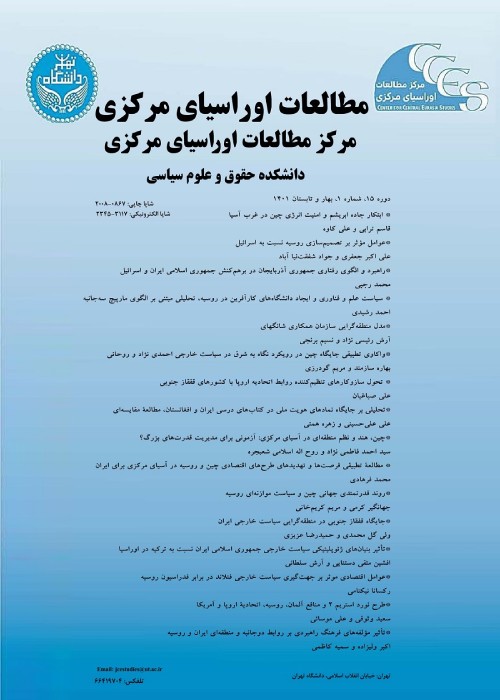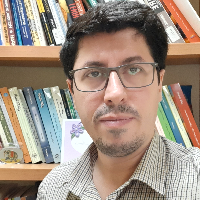Rethinking Russia’s Economic Resilience against Western Sanctions: Model and Lessons for Iran's Economy
The Russian economy relies heavily on the export of raw materials, making it vulnerable to the political decisions of its client countries. Russia has a history of tensions with the West and periods of cooperation with it have been short-lived. Significant events such as the global economic crisis in 2007-2008 and the political confrontation with the West that led to economic sanctions have had a profound impact on the Russian economy. The most recent manifestation of these differences appeared during the military conflict between Russia and Ukraine in February 2022. Iran, which is heavily dependent on oil exports, has been facing Western sanctions for many years. These sanctions have led to a decline in the government’s income and a decrease in the value of the currency for Iran. This situation has limited access to global financial systems and has posed challenges to the international trade.To counter the impact of Western sanctions, Iran has adopted an anti-sanctions economic model that prioritizes domestic production and investment in infrastructure projects. Iran’s goal is to achieve economic growth by focusing on strengthening the domestic market and reducing reliance on foreign trade amid external pressures. Gaining insights from other countries with similar economic structures that have successfully implemented anti-sanctions models can provide valuable lessons for Iran's efforts. This article examines Russia’s experiences, which can benefit Iran’s efforts and examines appropriate anti-sanctions models for Iran.
Research question:
What lessons can Iran learn from Russia's economic resistance and its ability to resist Western sanctions?
Research hypothesis:
In response to Western sanctions, Russia has implemented import substitution and turned to the East. Inspired by China's successful “Made in China-2025” model, this approach could prove effective for Russia. Similarly, Iran needs a well-thought-out long-term strategy to build a robust anti-sanctions economy. Using Russia's experience and adopting the “Made in China-2025” policy can be a valuable plan for Iran's economic development.
Methodology and theoretical framework:
The research method is qualitative and the data is collected by referring to articles and scientific sources. There are various definitions of economic sanctions and their conceptual frameworks in academic literature. For example, Knobel examines the historical development of theories on economic sanctions over the past century to address questions about their objectives, motivations, effectiveness, and consequences. Anton Flipenko offers two views on the definition of economic sanctions: Realism and Liberalism. In the liberal view, he identifies two approaches - Cosmopolitanism and Authoritarianism.
After the Ukraine crisis, Russia faced sanctions that threatened its economy. However, policies such as “import substitution” and “pivot to the east” helped Russia mitigate the damage. Similar strategies are used around the world to boost economic development and protect against shocks and sanctions. Notable policies include India's “Made in India”, Germany's “Industry 4”, America's “Buy American and hire American”, and China's “Made in China-2025”. According to the economic, political, geographical, and cultural conditions of Russia, China’s approach can serve as a model for overcoming development challenges. This model may benefit Iran's economy, which is facing problems caused by oil dependence and sanctions. Iran and Russia share similarities in their reliance on natural resources like oil and gas, facing government oversight, international sanctions, economic volatility, crises, and the desire to diversify their economies while dealing with bureaucracy and corruption that hinder efficiency.The slowdown in China's economic growth rate in 2015 prompted the government to act to accelerate development. This included the introduction of a series of government programs and schemes. One of these programs, “Made in China-2025”, was unveiled in 2015. It outlined the tasks related to advanced technologies, the development of Chinese brands, and the promotion of service-oriented production over a ten-year period. The plan’s main focus is on innovation, filling gaps in key sectors, prioritizing quality, promoting “green manufacturing”, attracting talented employees, and building Chinese brands. China has emphasized ten key sectors in its construction program, all designed to meet global and domestic needs. By relying on these sectors, China’s goals are to strengthen its economic capacity.Given the above information, “Made in China-2025” program can serve as a model for the Russian economy. In response to economic sanctions imposed by the United States and the European Union, Russia has prioritized import substitution and increased support for domestic production and localization of industry. Russia can make significant progress by following the example of China. Furthermore, as Russia's need for new technologies continues to grow, it is considering a shift toward smart and digital products to align with global economic trends. In this research, we concluded that this model can be effective for Iran as well.
Russia has implemented the so-called “turning to the east” and “import substitution” policies to deal with the sanctions. East Asian countries have imposed less economic sanctions against Russia, making this policy a viable solution. Iran, which is rich in oil and under sanctions, can learn from Russian model and prioritize operational experiences in its plans. To overcome economic challenges caused by sanctions, Iran needs to implement import substitution, turn to the east, and design a long-term development policy. China's “Made in China 2025” program can be effective for Iran with the necessary adaptations. One of the strategies to reduce Western sanctions in Iran is to adopt global development models such as China’s “Made in China 2025” plan. This plan focuses on China’s position as a global leader in high-tech industries, robotics, and transportation using new fuels, aircraft manufacturing and more. By following this approach, Iran can create a long-term strategy to counter Western sanctions while adapting it to its own conditions.
- حق عضویت دریافتی صرف حمایت از نشریات عضو و نگهداری، تکمیل و توسعه مگیران میشود.
- پرداخت حق اشتراک و دانلود مقالات اجازه بازنشر آن در سایر رسانههای چاپی و دیجیتال را به کاربر نمیدهد.



